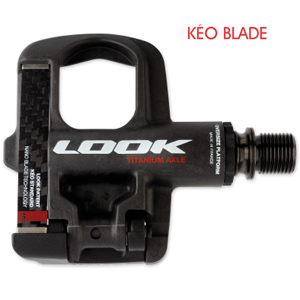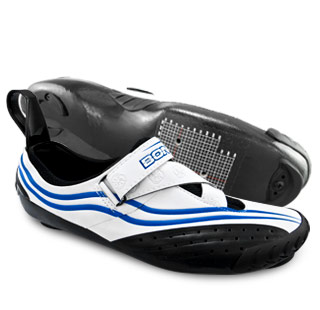The Speedplay Zero (2012)
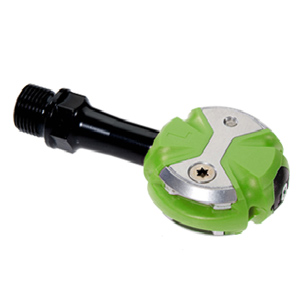
I'm a confirmed Keo Man. Like a Dixiecrat or Lutheran, sometimes you are what you are because to be anything else requires change, and change means work, discomfort and uncertainty.
It's not that the Look Keo lacks in performance in any substantive way. But if I'm transparent Slowman is Keo Man not because Keos are undeniably superior to every other pedal on the planet, but because my life is good; I'm on Keos; ergo, my Keos are good.
But my responsibility to Slowtwitchers requires me to act as if I am not a Lutheran, a Dixiecrat, or Keo Man. Hence the need of a candid, scrupulous, dispassionate reckoning of the Speedplay Zero.
It's hard to be a dispassionate cyclist. Cycling is passionate. For example, my recent weaning off Campagnolo Ergopower is like abandoning the religion of my youth. No, not like abandoning my religion. It is abandoning it.
You'll understand, then, that riding blasphemous componentry feels like a minor infidelity. Which can be fun, if the tryst is fruitful.
How fruitful was my date with Speedplay?
It's not exactly a first date. I've ridden the pedals before. But not for a long time. I mounted the Speedplay Zero cleats on a set of Sidi T3 tri-specific cycling shoes. There was a reason for this. Speedplays have one virtue that is almost singular in the world of pedal. They are—what's the word?—analogous, palindromic, reciprocal. They're upsy-downsy.
Why is this a big deal? Well, it's not, really, unless getting into these pedals in a hurry is an imperative. Do you know of a cycling sub-category where this becomes important?
Yes. Cyclocross!
Of course there's another. Triathletes, yes, it's in our sport where the ability to step down on the pedal and go is a bonus.
This assumes that you don't have your shoes attached to your pedals as your bike awaits in T1. I have not found this to be a particularly effective technique. Not that I'm the master of transitions. I can just think of better things for masses of AG triathletes to attend to—as they mount their bikes and depart—than getting their feet into their shoes.
It would be different if the typical triathlete was futzing about getting his or her shoe onto a pedal the weight balance of which forced it upside down, when what is needed is for the pedal platform to be rightside up. That's the beauty of Speedplay for the triathlete: When you're on Speedplay, your world is never upside down.
This is one of this pedal's virtues. Another is of particular utility to me. I have a hard time rotating my hip inward, which effects the outward twist of the heel that most people use to clip out of their pedals. This causes me to need—using most pedals—to rotate my heel inward, at the top of the pedal stroke, in order to exit. (For you old-timers, I'd have had a hard time riding the old Trimble monocoque, which has no open main triangle inside of which to invert my heel using this pedal exit method.)
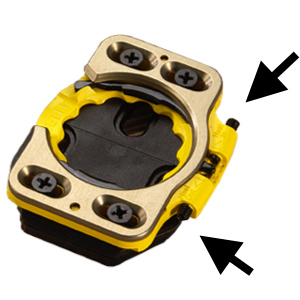
The Speedplay Zero has a very simple, easy to use, and nifty way for me to microadjust the arc of the float in the shoe, outside of which the shoe will release. This both protects against inadvertent release (for those whose feet, say, tend to splay at the bottom of the pedal stroke), and this feature also allows folks like me to set the release angle with precision. A diagram adjacent shows where the two screws reside on the cleat that control degrees of rotation in each direction.
The Zero sits, footbed-to-axle, quite low in profile. How low? It depends on the shoe, and the way the shoe is manufactured. There are two ways you can mount a Speedplay to a cycling shoe. The Zero requires a 4-bolt mount, and most shoes are built to accept a Look- and Shimano- style 3-bolt mount. The first order of business when mounting a Speedplay is to affix a plate that adapts 3-bolt to 4-bolt, and then you slap your Speedplay cleats aboard.
However, several shoe companies are making shoes that are Speedplay native. There is a new Sidi T3 "SP", for example, that has a sole shaped and drilled for a Speedplay cleat sans the adapter plate. Does designing the shoe Speedplay-native minimize the already minor height profile of the pedal and shoe? Yes, and maybe. The shoe itself, when made this way, can be slightly taller, depending on the shoe manufacturer. Whether this extra height equals or is less than the height of the platform rendered unnecessary I do not know for every shoe, and it varies shoe to shoe. But in general the footbed profile is lower for Speedplay-native shoes, and this is on top of an already low profile.
Note that this creates the effect of having your bike become slightly taller. If you remove a more standard pedal and shoe and replace it with, say, a Northwave or Sidi Speedplay-native shoe attached to Speedplay pedals, you'll probably have to lower your saddle, maybe as much as a centimeter. This means you're sitting a centimeter higher, versus your saddle, while in the aero position.
Does making the shoe Speedplay-native reduce the weight of an already pretty lightweight pedal? Same answer: it depends on the shoe maker. The adapter weighs about 40 grams. The difference between a Speedplay native shoe and its non-native counterpart is probably less than the weight of the Speedplay adapter, but it depends on the shoe maker.
The biggest benefit to a Speedplay native shoe is the reduction in the amount of screws—by half. Fewer screw heads to strip. Fewer screws to come loose or to freeze tight. DMT, Sidi, and Lake all make Speedplay native models, Northwave is about to release Speedplay native models, and I hear that Bont may have a couple of such models this year.
Of yet greater interest to me are Speedplay's various spindle lengths. Intuitively, it seems to me that how the knee tracks during the pedal cycle ought to be of interest. Vertical tracking is the gold standard. Does your knee track vertically, like a sewing machine or an old-style oil well? If not, the current thinking is to varus wedge for knees tracking toward the top tube at the top of the pedal stroke, and to lengthen the axle for knees that track outward.
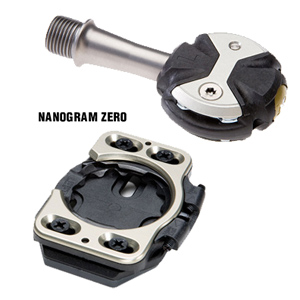
But most pedals do not offer spindle lengths. Rather, they offer spacers to place between the pedal shoulder and the crankarm to widen the Q factor.
Not so Speedplay. Its stainless spindles come in a 53mm standard length (spindle shoulder to pedal center), and also in the following lengths: 50mm, 56mm, 59mm, 65mm. You can either buy the spindles, or you can buy the pedals built with the spindles of your length installed.
Don't know your length? Speedplay has a pedal set, in a case, that it ships to its retailers, containing all of the lengths. Your LBS, if so equipped, can place this pedal on its fit bike (if so equipped), or on your own bike, and note how your knee tracks. You can even buy Speedplays with spindle lengths differing, left pedal to right.
I saw at the most recent Interbike a nifty Speedplay pedal just for bike fitters. It features a telescoping spindle. This speeds up the fitting process even more, but this fitting tool is not yet, as of this writing, available.
Speedplay talks of an aerodynamic benefit accruing to the use of its pedals that approaches the value when changing from a standard component (helmet, wheel, etc.) to optimized for timed racing. Is this a real or mythical time savings? I don't know and because I have no reliable data I can't authoritatively opine.
There is one achilles heel to Speedplays but, in truth, it's an achilles arch, not a heel. There is, unfortunately, no standard in the industry describing how much arc should be built into the outsole of a cycling shoe, and the profile of that arc. Speedplay cleats are made to fit on a flat shoe surface. Speedplay-native shoes feature a flat mounting surface. For 3-bolt mounting systems, Speedplay's adapter is curved on one side, flat on the other. If the curve of the shoe is greatly at odds with the curve of the Speedplay adapter, it forces the adapter to change shape.
This compromises what would otherwise be the perfect mating between the cleat and the shoe. When this mating is compromised, everything still works and it works pretty well, but you may not get a textbook match between pedal, cleat and shoe.
For this reason, it might be beneficial to take stock of what's important to you. If you're a Speedplay devotee, it might be fruitful to eschew shoes that are not a good profile match for Speedplay's cleat or adapter.
Speedplay Zero pedals can be had for as low as $139 a pair, if you choose the chrome moly spindle. The model with stainless steel spindles will set you back $199, and you must upscale to stainless if you want the option of various spindle lengths. Titanium takes you up a notch, into the mid-$300s.


